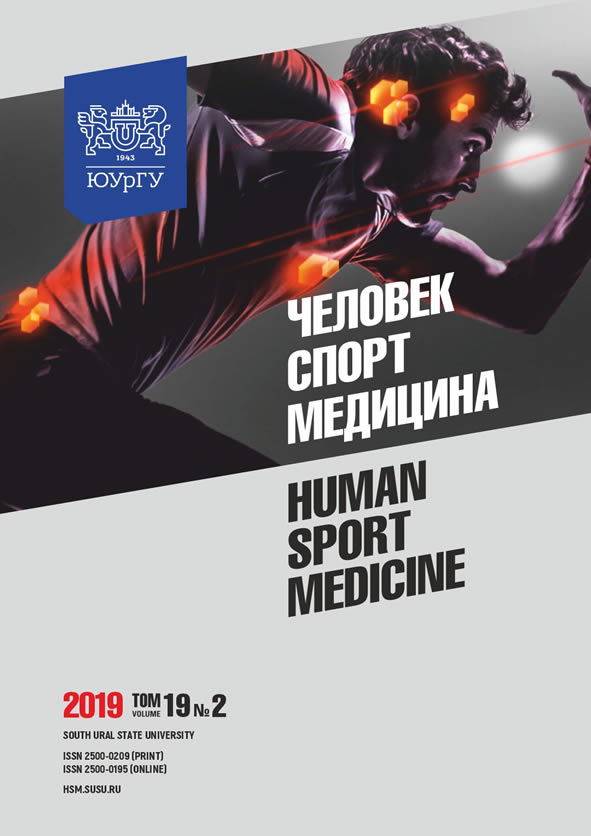A COMPARATIVE ANALYSIS OF BIOMECHANICAL AND ELECTROMYOGRAPHIC INDICATORS DURING FUNCTIONALLY SIGNIFICANT TIME INTERVALS OF THE BENCH PRESS EXERCISE IN ATHLETES WITH MUSCULOSKELETAL DISORDERS
Abstract
Aim. The article deals with the analysis of kinematic, dynamic, and electromyographic indicators in the selected periods and phases in athletes with musculoskeletal disorders. Materials and Methods. 24 highly-skilled and low-skilled athletes participated in the study. The bench press exercise was performed with the weight of 40, 80 and 90% of maximum weight. The analysis of dynamic indicators was conducted by using hardware and software complex in the area of the upper shoulder girdle and pelvis. Barbell trajectory, its speed, and acceleration were calculated with the help of video analysis. Electromyograms of symmetrical muscles were registered synchronously: M. pectoralis major, dexter et sinister; M. triceps brachii, dexter et sinister.
Results. In highly-skilled athletes, barbell acceleration which followed after holding a barbell on the chest was accompanied by the increase of both speed and acceleration. During barbell deceleration, both speed and acceleration were negative and returned to initial values. In low-skilled athletes, the same indicators decreased significantly. Barbell acceleration corresponded with a maximum electrical activity of M. pectoralis major, dexter et sinister, while barbell deceleration coincided with M. triceps brachii, dexter et sinister. Conclusion. A comprehensive analysis of the bench press exercise indicators allows controlling and correcting sports technique.
References
References on translit
Copyright (c) 2019 Human. Sport. Medicine

This work is licensed under a Creative Commons Attribution-NonCommercial-NoDerivatives 4.0 International License.















